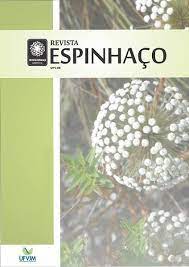On the Fringe of Irape: consequences of the dam on the Jequitinhonha river a decade after its implantation
DOI:
https://doi.org/10.5281/zenodo.3937478Keywords:
Jequitinhonha Valley, Peasant communities, Irapé HPPAbstract
This paper aims to systematize the meaning of a great developmental project to the population of municipalities affected by the hydroelectric plant after its operation. The area flooded by the Irapé plant reached seven municipalities of the Jequitinhonha river upper course, Northeast of Minas Gerais, resulting in the relocation of approximately five thousand people and affecting thousands of inhabitants living in the lakeshore. The long resistance process of the affected population achieved fundamental rights throughout the relocation course; however, it did not impede the great socioeconomic, cultural and political losses that happened during the violent implantation, which sought to legitimize itself by the fact of the development promotion in the affected regions. From a qualitative methodology, we identified the consequences of the enterprise through interviews with representatives from different society sectors. The consequences caused by Irapé are diverse and complex. The dam changed the population's relations with natural resources, frustrated different societal segments in terms of job creation, income and tourism, and strongly pressured ways of life into peasant communities.
References
ANEEL. Agência Nacional de Energia Elétrica. Compensação Financeira. Disponível em: < http://www.aneel.gov.br/compensacao-financeira>. Acesso em: agosto de 2017.
Araújo, E. A. D. (2016). Políticas públicas para sustentabilidade: o caso do projeto Ipirá na usina hidrelétrica de Tucuruí‐Pa. REGE-Revista de Gestão, 23(4), pp. 276–285.
Brandão, C. R. (1981). Plantar, Colher, Comer. Goiânia: Ed Graal.
Costa, P. C. (2018). À Margem de Irapé: uma década de legados e consequências da barragem do Rio Jequitinhonha.
Enerconsult, E. (1993). Estudos de Impacto Ambiental e Relatório de Impacto Ambiental.
Furtado, C. (1994). A superação do subdesenvolvimento. Economia e sociedade, 3(1), pp. 37–42.
Galizoni, F. M. (2005). Águas da vida: população rural, cultura e água em Minas.
Gomes, J., Hamza, V., & Vieira, F. (2019). Interpretation of geoelectric surveys using synthetic models and its application for study of groundwater resources in semiarid regions of Minas Gerais, Brazil, in: Proceedings of the 16th International Congress of the Brazilian Geophysical Society&Expogef, pp. 1–5. Brazilian Geophysical Society. http://dx.doi.org/10.22564/16cisbgf2019.264
Haesbaert, R. (2011). Territórios Alternativos. São Paulo: Contexto.
Harvey, D. (2004). Novo imperialismo (O). São Paulo: Edições Loyola.
Lestingi, M. D. (2010). A inserção dos custos sociais nos empreendimentos hidrelétricos: Estudo de caso da UHE Irapé (MG). http://dx.doi.org/10.11606/D.86.2010.tde-04112010-135107
Lima, V. M. P. S. Secas e águas: um estudo sobre as alterações na dinâmica da água no A., & Jequitinhonha, M. . (2006). Seca e s’águas: um estudo sobre as alterações na dinâmica da água no Alto Jequitinhonha, MG. 2006.
Machado, I. F., & de M. Figueirôa, S. F. (2001). 500 years of mining in Brazil: a brief review. Resources Policy, 27(1), pp. 9–24. http://dx.doi.org/10.1016/S0301-4207(01)00004-6
Martins, J. S. (1981). Os camponeses e a política no Brasil: as lutas sociais no campo e seu lugar no processo político. Petropolis: Vozes.
Pereira, V. G. In: Naves, F. (Ed.). (2015). O trabalho de reconstrução e a reconstrução do trabalho: formas de ser, viver e fazer de agricultores tradicionais do Alto Jequitinhonha deslocados para novos ambientes. Trabalho e trabalhadores nas sociedades contemporâneas: Outras lentes sobre invisibili. Elsevier Brasil.
Quintana, R. D. (2014). Actores sociales rurales y la nación mexicana frente a los megaproyectos mineros. Problemas del desarrollo, Quintana, R. D. Actores sociales rurales y la nación mexicana frente a los megaproyectos mineros. Problemas del desarrollo, 45(179), pp. 159–180.
Ribeiro, E. M. (1997). As Estradas da Vida: terra, fazenda, e trabalho no Jequitinhonha e Mucuri, Minas Gerais.
Ribeiro, E. M., Ayres, E. B., Galizoni, F. M., Almeida, A. F., Pereira, V. G. (2014). Programas sociais, mudanças e condições de vida na agricultura familiar do Vale do Jequitinhonha Mineiro. Revista de Economia e Sociologia Rural, 52(2), pp. 365–386. http://dx.doi.org/10.1590/S0103-20032014000200009.
Ribeiro, E. M., Galizoni, F. M., Calixto, J. S., Assis, T. D. P., Ayres, E. B., Silvestre, L. H. (2005). Gestão, uso e conservação de recursos naturais em comunidades rurais do Alto Jequitinhonha. Revista Brasileira de Estudos Urbanos e Regionais, 7(2), p. 77. http://dx.doi.org/10.22296/2317-1529.2005v7n2p77
Ribeiro, E. M., Galizoni, F. M., Silvestre, L. H., Calixto, J. S., Assis, T. de P., Ayres, E. B. (2007). Agricultura familiar e programas de desenvolvimento rural no Alto Jequitinhonha. Revista de Economia e Sociologia Rural, 45(4), pp. 1075–1102.
Santos, M. R. A. (2005). Irapé: a catedral tecnológica e a supressão de uma paisagem. ComCiência - Energia: ensino e alternativas.
Santos, R. C. O. (2000). Desenvolvimento e os Atingidos pela Hidrelétrica de Irapé no Alto Jequitinhonha. I CONACSO. Congresso Nacional de Ciências Sociais: desafios da inserção em contextos contemporâneos. 1(2), pp. 1–17.
Zucarelli, M. In: Zhouri, A. (org. ). (2011). O papel do termo de ajustamento de conduta no licenciamento ambiental de hidrelétricas. As Tensões do Lugar: hidrelétricas, sujeitos e licenciamento ambiental. Belo Horizonte: Editora UFMG.
Downloads
Published
How to Cite
Issue
Section
License
Copyright (c) 2022 Revista Espinhaço

This work is licensed under a Creative Commons Attribution-NonCommercial-NoDerivatives 4.0 International License.


